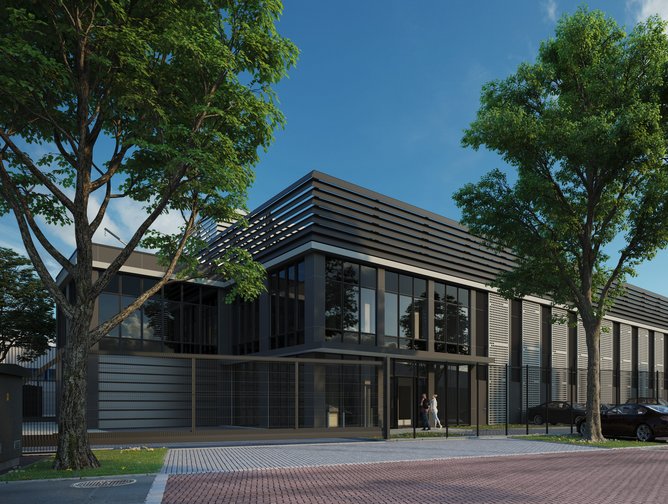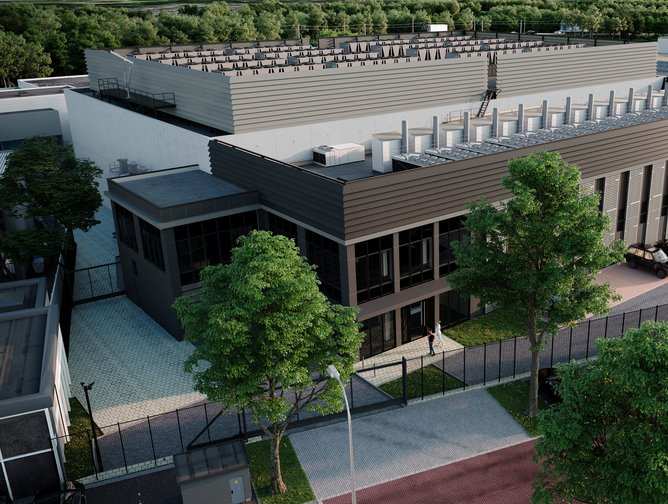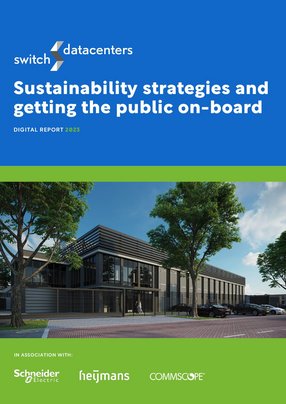Sustainability strategies and getting the public on-board
When it comes to public opinion, data centres are among the industries that face the biggest of uphill battles. The sector – and not always without good reason – has long been perceived as the antagonist of the world’s sustainability targets. And now, this long-standing reputation is proving a major obstacle to the growth of the sector.
Despite the fact that the data centre industry is full of pioneering sustainability advocates, each of whom is developing sophisticated, future-proof, green solutions, it’s still a challenge to reverse the state of public opinion.
So, how can companies that are leading the charge towards a greener future establish the right reputation in their marketplace and successfully demonstrate their sustainability commitment to the public?
In an exclusive interview with Edgar Van Essen, Managing Director of Switch Datacenters, we learned about how the company is deploying unrivalled green initiatives and ensuring those efforts don’t go unnoticed.
Expanding and evolving in the Amsterdam data centre market
Switch Datacenters is an Amsterdam-based data centre provider that has been at the forefront of the region’s sustainability focus for the last 15 years.
“Our role in the Dutch data centre market is to be the challenger. We’re coming from a relatively small position in retail and, over the last three years, have succesfully moved into large hyperscale and wholesale site development. We’re not known to everybody, and we like to keep it that way,” explains Van Essen.
“We are not shouting from the rooftops what we do – that doesn't help us in our plans to get the right locations and the right new sites in Amsterdam. So we have a deliberately low profile, but in Amsterdam, we know every street, and every potential building that we could turn into a data centre.
Every year, Switch develops new data centres and adds to its expanding portfolio.
“So we have more than 120MW of data centre capacity in development in Amsterdam. But, when we have bigger customers on board, we might also follow them abroad,” Van Essen adds.
The company was founded to address what they saw as a gap in the market and bring a new approach to the industry. “Switch Datacenters started 15 years ago by coincidence, because Gregor (CEO) and his brother were running the first hosting company in the Netherlands.
“They felt really mistreated on pricing, flexibility and customisation. So they decided, typically entrepreneurially, to just build a data centre themselves. They had no clue what it was, but they did that, improved their designs over the years and, actually, they succeeded in doing so.”
From there, Gregor and his brother spent a lot of time optimising their technology and innovating in the data centre space.
“They achieved this not just by buying everything that was on catalogue, but by actually thinking for themselves what they needed and reinventing smarter and better solutions. In the end, this led to very efficient solutions that we developed ourselves and in-depth knowledge on cooling systems, modular design, construction and energy efficiency.
“Today, Switch still has a natural focus on independent development. We have a lot of engineers that have a thorough background in industrial design, meaning we have all the knowledge in-house that we need.”
And now, after almost two decades spent establishing its presence in the Dutch market, Switch’s next goal is to utilise its learnings, grow even bigger in Amsterdam and perhaps strategically expand across the continent.
“At this point in time, we’re one of the best at finding and developing new plots – and we do this in a totally different way to a lot of our competitors. The reason we are good at this is because we focus on Amsterdam, and we know the Amsterdam market inside-out. We know the language, we know the politics, we know how to get the power, and we know the right areas for new locations.”
“So we decided, ‘Let's first build a strong base in Amsterdam and, once we have that base and we have those customers on board, we will replicate that model in other countries’.”
Paralleling global developments – the challenges of the Amsterdam market
According to Van Essen, the Amsterdam market is a particularly difficult one for data centres.
“The main challenges in the Amsterdam market are mainly about sustainability and getting power and permits. There's a lot of political pressure in this regard, and I think it all comes back to the public not understanding what data centres are about,” Van Essen explains.
Continuing in this vein, he asserts that one of the industry’s key flaws lies in the fact that its leaders and innovators are talking exclusively in technical language. This mode of communication is actually creating a big gap, because politicians aren’t engineers, and the general public are unable to follow these explanations. As a result, those outside the industry are becoming increasingly alienated from – and therefore mistrusting of – it.
“We have totally forgotten that we have to actually adapt our language to the language of the public and, when using scarce resources like land, power etc, give something back to the public,” Van Essen explains. “I also think a lot went wrong there, specifically, after a lot of foreign capital came to Amsterdam and adopted a one-size-fits-all push out of their US headquarters.”
For many global enterprises, Van Essen says a ‘copy-paste’ approach across all their new locations is common. However, this can be a serious hindrance to efficiency, and be highly detrimental to a brand reputation and a reason for slow innovation.
“This optimisation game – data centre 1.0, as I call it – was very technology-oriented and not at all society-aware. That is actually what caused a lot of frustration in Amsterdam with both policymakers and the public, and it is now also becoming a broader European topic.”
“Amsterdam was one of the first cities that started to block the growth of data centres because, actually, they were consuming too much space and power, which were meant for other things. In the end, the industry was very much the root cause of creating this block, and you see the same happening now in Frankfurt, and even in London and Dublin.”
Unexpectedly, Van Essen says that because Amsterdam has always been leading this trend towards high sustainability demands, that has proven to be a major advantage of developing solutions there.
“Once you have a working solution in Amsterdam, the chance that you can copy-paste it into Frankfurt, Dublin, and the others is pretty high. If you start the other way around – develop something in London and then try to get into Amsterdam – the likelihood that you will fail is pretty big,” Van Essen asserts.
“So, it's all about understanding what is the best spot to start developing a new data centre formula. And we are 100% convinced that Amsterdam is the perfect ground for that. Not only due to the size of the market, but also the political environment we are in.”
Communicating sustainability – how to get the public on-board
So, the twofold challenge becomes implementing future-proof sustainable solutions, while also communicating those efforts to clients and the public. As Van Essen states, preserving the industry requires nothing short of a new reputation.
“What we really now need to see happening, very quickly, is for the hyperscalers to start adapting their operational data centre technology models to actually become much more green by nature,” he urges.
“If they still build new, huge land-consuming data centres designed on air cooling, the situation will never change. So we will really call on the hyperscalers and the forward-looking companies to start implementing alternative cooling technologies and start looking at site redevelopment, rather than builing new ones from scratch.”
Despite being a relatively small industry player, Switch is renowned for being a major presence on the sustainability stage and a key voice in these global discussions.
“We have been a very active member of all the forward-looking innovation committees in the global industry for many years, and try to contribute there as much as we can. We've been very active in the Open Compute Platform, for instance; we're also one of the founding members of the Sustainable Digital Infrastructure Alliance and a member of the Climate Neutral Data Centre Pact.”
To help drive innovation further in the sector, Switch even opened up one of its Amsterdam data centres as a test batch for new sustainable technologies.
“We said, ‘If you guys want to see how this works and try it out, come to us, and we will actually help you to develop your solutions’. Already, we have quite a number of forward-looking companies coming to us because they want to do something with liquid cooling, reusing heat or using refurbished equipment.”
“They naturally come to us now: we understand their way of thinking, and we actually facilitate their division models. And that's totally different if you go to the big names – we take the opposite approach to them. We say, ‘Please come to us and, jointly, we will find the next level’.
For instance, experimenting with reusing server heat is a key part of those activities. For Switch, reusing the heat generated by its servers is an essential part of both future-proofing tech design, and preparing its customers for new business models and sustainability legislation in the future.
Switch’s long term ambition is that data centres will eventually become heating plants for district heating, thereby helping cities, policy makers and utility providers to move away from the current fossil fuel heat plants much more quickly.
“Data centres will no longer be seen as enemies of the people, and will contribute to wider society in a much smarter way. And that's what we call data centre 2.0.”
It is through these market differentiators that Switch has been able to establish a unique, immensely strong relationship with its network of partners.
“Our partners see that we're the odd one out – the new kids on the block, in a certain way. They’re also seeing that we're growing quite substantially. So, now, we are really on a lot of innovation calls with really big suppliers,” Van Essen explains.
“They start to understand what we're doing, why we’re doing it, and see the value of our approach, that actually brings us into very strong strategic alliances. Despite the fact that we don’t yet have the volumes of the really large data centres, we still get the same level of board attention, because we bring much more to the table than just volume.”
In this way, Switch is adopting a multi-faceted, intuitive approach to sustainability, bringing all the required elements together, while successfully showing the public that data centres can have a place in our greener future.
“It's all about understanding where the public opinion is heading to understand new things around the corner that will impact your business. It is absolutely not technology alone that defines our future. It's much more about understanding society and contributing to society – and that's where we differ from the rest.”






